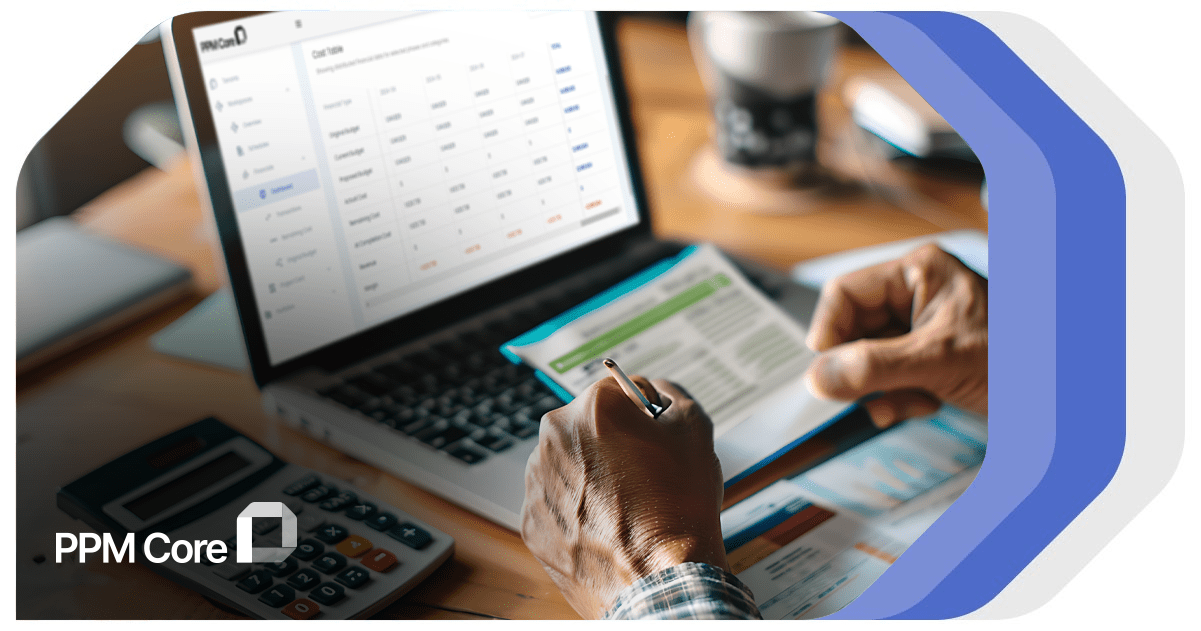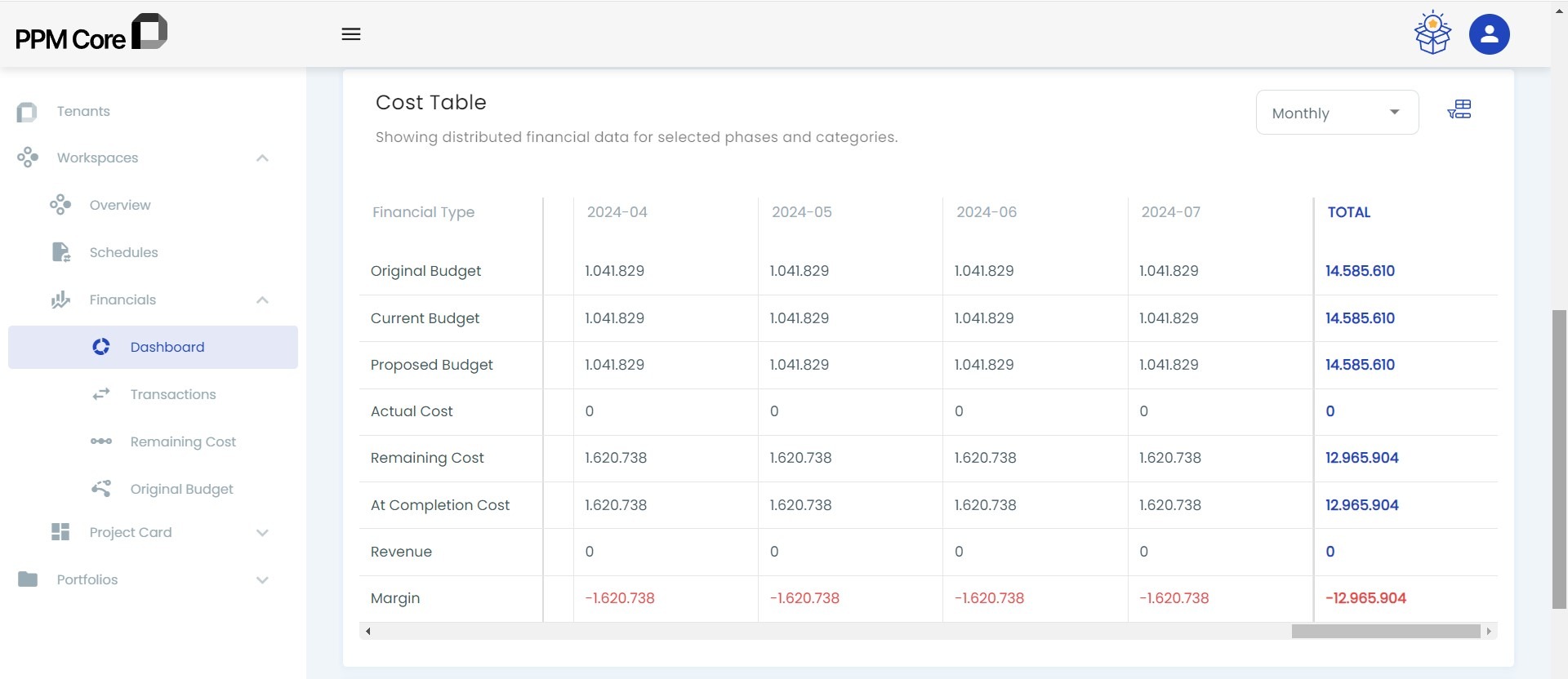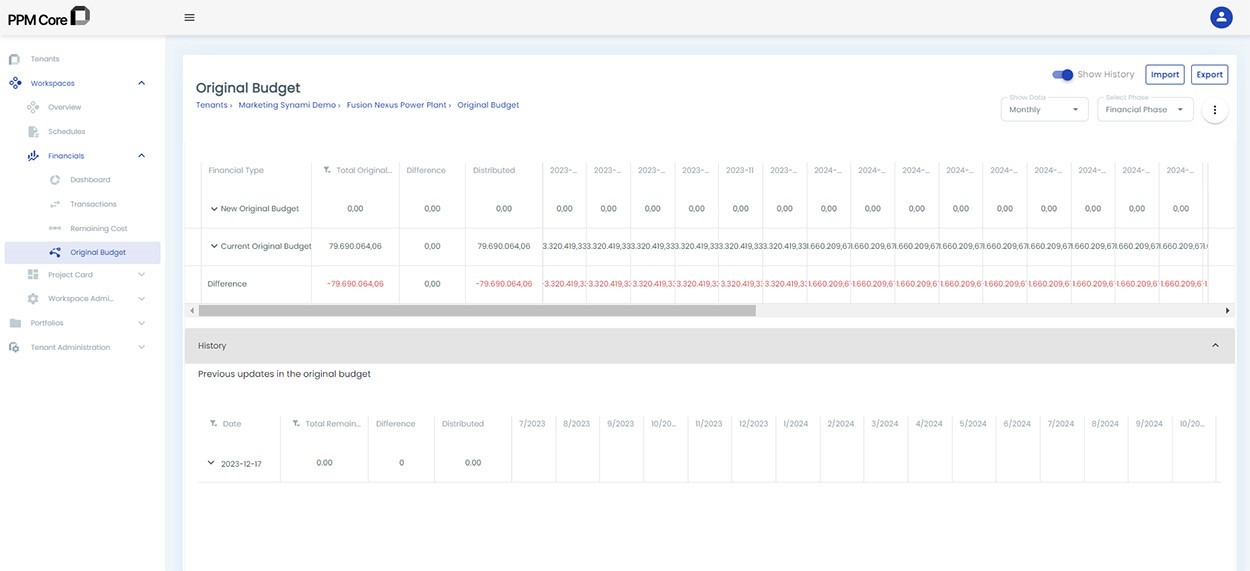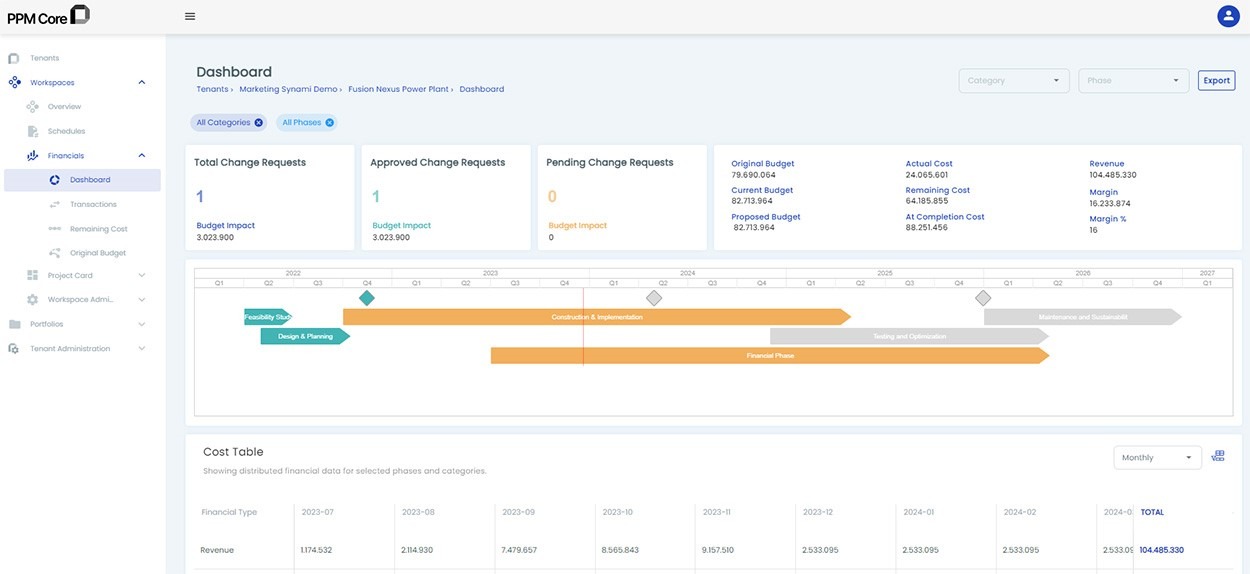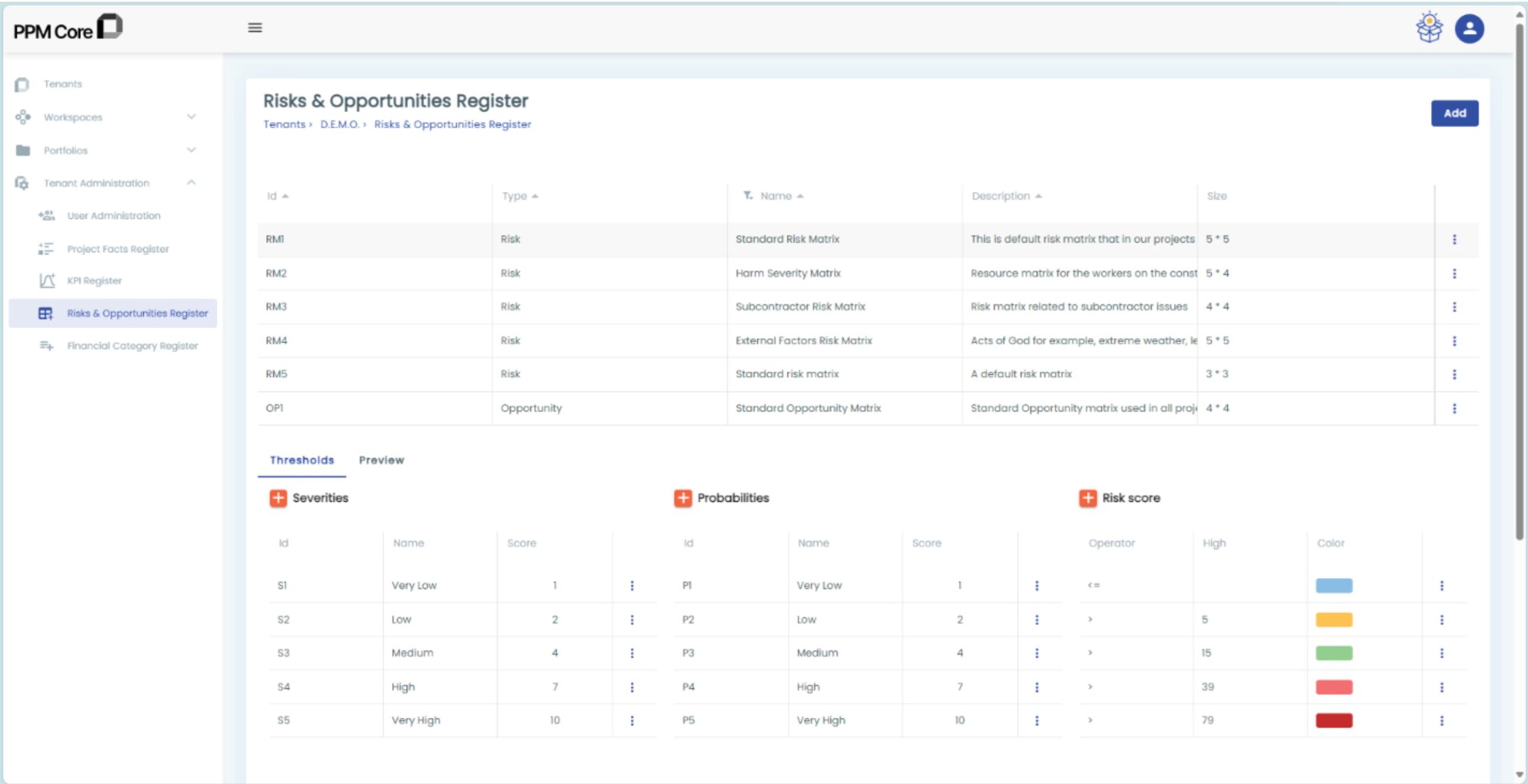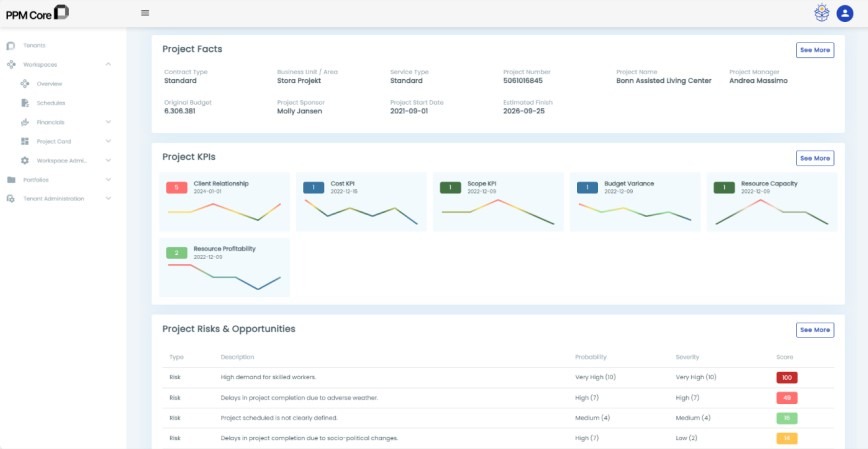Learn How to Manage Finances: Cost Module Efficiency
A successfully managed project is completed on schedule and within budget, ensuring that all resources are efficiently utilized.
Cost is typically one of the most important variables in determining a project’s success. With that in mind, the crucial question is: How can you ensure that the project stays “on budget”? The answer lies in “control.” To remain within the budget, project managers need to control project costs proactively and systematically.
Join us in the rest of the article where our focus is on understanding the basic principles of How to Manage Finances, the most effective strategies, and the use of digital tools in Project Management.
Understanding Cost Modules
Cost modules in financial management are structured frameworks or components inside financial systems that track, analyze, and manage costs connected with projects, operations, or activities within the teams.
Their goal is to provide thorough insights into expenditure patterns, enabling managers to successfully monitor and control expenses throughout the project’s lifecycle. Cost modules enable organizations to accelerate budgeting processes, allocate resources more efficiently, find cost-saving opportunities, and improve financial transparency and responsibility.
These modules frequently interface with other financial tools and systems, allowing for full financial planning and decision-making based on reliable cost data. They are critical instruments for improving cost management techniques while also maintaining an organization’s financial stability and sustainability.
Overview of the Project Costs in PPM Core Cost Module
But in this part of the main topic Learn How to Manage Finances: Cost Module Efficiency we cannot forget the Importance of accurate cost tracking for project success.
Accurate cost estimates are critical to project success. They lay the basis for project planning, budgeting, and decision-making. Without precise cost estimates, project teams risk budget overruns, schedule delays, and even project failure. Here are a few reasons why precise cost estimations are essential:
Budgeting and Resource Allocation: Accurate cost estimates support realistic budgeting and resource allocation. Knowing the projected expenses enables project teams to assign the appropriate resources and guarantee that they are used efficiently.
Project Planning: Effective project planning requires accurate cost projections. They assist in defining project scope, recognizing dependencies, and establishing realistic targets. Without proper cost estimates, project plans may be unrealistic and difficult to carry out.
Risk Management: Accurate cost estimates help project teams identify and handle risks efficiently. Knowing the expected costs allows teams to analyze the effect of prospective threats and develop mitigation solutions.
Decision-Making: Accurate cost estimates enable informed decision-making. They assist project teams in determining the financial sustainability of a project, assessing the impact of various decisions, and making educated judgments.
The Importance of Setting Clear Objectives
Setting defined financial goals is a vital component of every global organization’s long-term success strategy. These goals can be established using various methods, such as leveraging prior performance data or analyzing current market trends as benchmarks. Once objectives are identified, organizations must formulate actionable plans to achieve them, aiming to maximize returns on investment while mitigating potential risks.
Measurable targets play a crucial role in this process by enabling businesses to monitor progress towards their intended outcomes over time. This adaptability allows managers to adjust strategies in response to evolving market dynamics or fluctuations in internal resources throughout different periods of the year. Moreover, clear and aligned goals provide accountability among team members responsible for achieving them, thereby improving the overall performance.
For example, a specific financial aim could be to increase profitability by 10% over the next fiscal year, which could include objectives such as expense reduction or increased sales income. Assigning realistic timetables to these targets means progress is methodically documented and assessed throughout the year, and by comparing progress results to intended outcomes, we can determine if we have met the specified goal.
Ultimately, setting and pursuing financial goals is essential for organizations to attain their desired results. By gathering and analyzing relevant data, businesses can pinpoint areas for improvement, gain valuable insights into available opportunities, and efficiently navigate towards achieving their goals.
Implementing Effective Cost Control
The capacity to monitor costs in real time is critical, but it is only one component of a comprehensive cost-control plan. While constant monitoring is required, there are ways you can implement cost control measures before the project begins.
These are some cost control techniques that can assist you in creating more accurate cost forecasts:
- Cost baseline: A cost baseline is a reference point that displays the project’s approved budget. It is based on cost estimates and project schedules and represents the predicted revenue over time. A cost baseline is critical for assessing project performance and finding deviations or variances from the plan. A cost baseline allows you to compare actual expenses to expected expenditures and take corrective steps as needed.
- Earned Value Management: Earned value management compares project performance to a baseline, considering costs, time, technical scope, and risk. This helps to discover problems and project expenses by comparing performance to the intended value, actual cost, and earned value.
- Cost Reduction: The most effective cost control is to cut costs. There are numerous approaches to reduce project costs, including efficient resource allocation to mentoring and team retention. Project managers should look into every method of cost reduction, such as process improvements, reducing project scope, and even outsourcing where needed.
- Cost Accounting: Cost accounting is the process of tracking, assessing, and recording variable and constant expenses associated with the production of products and services. This technique allows project managers to improve efficiency, make better strategic decisions, and stay within the budget. This is all done, along with cost control, to increase net profit margins through budgeting, forecasting, product or service pricing, and alignment with corporate strategy.
- Budgetary Control: Simply described, budgetary control is the management of revenue and expenses. Like many cost control approaches, it is all about comparing actual expenses to anticipated costs to see whether there is a difference.
- Resource-based analysis: This technique estimates costs by breaking down the project into individual tasks and the resources needed for each task. It involves estimating the quantity of each resource (e.g., labor hours, materials, production costs) and multiplying by the unit cost of that resource. Resource-based estimating can be extremely accurate, but it necessitates careful project preparation. Integrating resource-based estimation into the project management life cycle can improve resource allocation and cost control.
At the conclusion of our examination of the best working techniques in our topic Learn How to Manage Finances: Cost Module Efficiency , we need to highlight the vital role that digital tools play in modern project management.
Project management is a complex profession that involves planning, executing, and monitoring actions to meet project objectives. The advancement of technology has provided useful project management solutions that are now considered essential by companies across various industries. To effectively maximize the benefits of these technologies, implementing project management software can provide numerous advantages, like:
1.Efficiency: Reduces the need for manual intervention, allowing project managers and teams to prioritize strategic activities.
2.Accuracy: Processes are less prone to mistakes, assuring constant accuracy of project data and tasks.
3.Consistency: Ensures project processes are standardized and applied systematically throughout the organization.
4.Time savings: Project managers may better allocate their time, which leads to faster project completion.
5.Comprehensive Cost Management: Record, track and manage all financial transactions effortlessly, providing a clear and accurate financial trail of the project.
PPM Core Cloud Project and Portfolio Software integrates these above-mentioned advantages and significantly improves various roles and industries in the Project and Portfolio Management landscape.
PPM Core strengths:
Task management
In project management, software can streamline task allocation and tracking. Project managers can assign tasks to team members based on predefined rules and priorities. This ensures that each team member knows their responsibilities and deadlines, reducing the risk of tasks falling through the cracks.
Reporting and analytics
Generating reports and analyzing project data can be time-consuming and error-prone when done manually. PPM Core’s cost management module improves project control through real-time reporting, historical tracking, and insightful analysis. This data-driven approach empowers project managers to make informed decisions and adjust project strategies as needed, leading to better project outcomes.
Communication and Collaboration
Effective communication and collaboration are crucial for project success. As a cloud-based project and portfolio management solution, PPM Core creates a collaborative environment designed for companies, teams, and organizations. It empowers your enterprise to maintain its focus on strategic objectives while breaking down organizational barriers. Keeps project teams connected by unlocking their full potential for delivering exceptional results.
Risk management
Identifying and mitigating project risks is a fundamental aspect of project management. PPM Core can assist in risk management by continuously monitoring project data and identifying potential issues or deviations from the project plan. By providing a clear picture of the project’s state, it can encourage project managers to take proactive steps to mitigate risks before they rise, lowering the possibility of project failure.
Cost Management
Optimize control with PPM Core’s cost management. Real-time reporting, historical tracking, and insightful analysis empower effortless decision-making for project success.
Budgeting and Forecasting
In today’s dynamic and competitive corporate market, learn How to Manage Finances: Cost Module Efficiency, budgeting, and forecasting procedures are critical for companies seeking to meet financial objectives, maximize resource allocation, and maintain financial stability. Budgeting and forecasting are useful instruments that can be used for financial planning, decision-making, and performance evaluation, as they provide companies with guidelines for managing their financial resources and navigating uncertain markets.
They predict future financial results, identify risks, and adapt approaches.
Accurately forecasting future costs is vital for project management. This kind of approach keeps the project within budget and enables proactive revisions to strategy and resource allocation. The method involves analyzing historical data and anticipating financial risks. Here are some crucial points to consider:
1.Historical Data Analysis: By examining past projects, one can identify patterns and trends that are likely to repeat. For instance, if a particular phase of a project consistently runs over budget, it can be flagged as a risk area for future projects.
2.Expert Judgment: Experienced professionals can provide solid forecasts. Their instincts and understanding can help fill in the gaps where data is limited.
The PPM Cost Management Feature is a useful complement to companies effective budgeting operations. It simplifies financial transactions and planning, making cost control an essential component of your project strategy. Its main objectives are to streamline financial activities, properly manage budgets, and efficiently minimize costs.
Provides precision in budget management, allowing you to monitor project budgets, compare initial budgets to actual financial performance, and make informed cost allocation decisions.
Overview of the Original Budget in PPM Core Cost Management Feature
- The Budget Dashboard : Presents all costs for the project plan, such as Original Budget, Actual Budget, Actual Costs, Remaining Costs, and other financial data as well as information for the statuses of different budget requests.
- The users can view: Budget information for the entire project plan (information for all phases and financial categories) or for specific financial category/categories and project phase(s).
Overview of the financial dashboard in the PPM Core Cost Management Feature
The Financial Dashboard in PPM Core provides a comprehensive overview of the project’s financial health. It features real-time tracking of budgets, transactions, and costs, ensuring that the project plan stays within financial targets. Customizable tables and visual analytics simplify financial data interpretation, aiding strategic decision-making. With secure, intuitive access, it enables project managers, financial managers, project controls and enhances financial efficiency across all project phases.
Cost Risk Management System
As we are coming to the last section of this article, we cannot forget to highlight the importance of well implemented cost risk management system, because often in project management, companies and teams are excluding them from their strategies, and most of those cases result in higher costs than estimated.
Cost risk assessment involves identifying, assessing, and prioritizing sources of uncertainty and unpredictability that may impact a project’s cost. It is crucial because it allows project managers and stakeholders to make more informed decisions, allocate resources, and plan for contingencies. Conducting a cost risk assessment can prevent project overruns, delays, and disagreements.
Benefits of implemented cost risk assessment:
- Provides an accurate and clear estimate of the project’s cost considering the potential range of outcomes and the likelihood of each scenario. This can help to establish realistic expectations, communicate risks, and justify budgets.
- Assists in identifying and mitigating the important cost drivers and risk factors that may affect project costs. This can help to reduce uncertainty, improve design, and execute risk response techniques.
- Allows the project team to monitor and control project costs throughout the project’s lifecycle by comparing actual cost performance to the baseline and updating the risk assessment as new information is available. This can help to detect and correct deviations, manage changes, and report progress.
- Enables the evaluation and comparison process of various project choices by quantifying the compromises between cost, time, quality, and scope. This can help you choose the best choice for meeting the project’s objectives and stakeholder expectations.
The PPM Core Risk Assessment Matrix as well as the Risk and Opportunities Register can be extremely useful in this section; These two functionalities can make the process of managing the cost and risk much easier and ensure successful and cost-effective project deliverables.
Risk Assessment Matrix
In project planning, the risk assessment matrix (sometimes known as the risk control matrix) is used for assessing risks. Identifying and analyzing project risks and assessing the potential consequences of those risks are important elements of the project management process.
By categorizing risks according to their probability and severity, the risk assessment matrix visualizes the risk analysis. For all project team members and key stakeholders, this tool provides a holistic view of the risks in a project.
Risk Matrix Preview
Risk and Opportunity Register
PPM Core risk and opportunity register records all identified risks and opportunities, along with their analysis and action plans. This log describes risks or opportunities, their severity, probability, and the actions being taken to manage them.
Additionally, the risk register identifies risks, their severity, and the mitigation steps required. It serves as a tool for project managers to monitor risk management processes. Typically, the project manager ensures the register is updated, although this task is often delegated to project control.
Overview of the Risk and Opportunities Register in PPM Core
Once the risk is discovered from the financial module can be easily placed and monitored in the Project Card Module of PPM Core .
Overview of the Project Risks and Opportunities presented in the Project Card
Benefits of the Risk and Opportunity Register:
1.Improved Monitoring: Facilitates ongoing tracking of risks and opportunities.
2.Enhanced Decision-Making: Provides a comprehensive overview, aiding informed decisions.
3.Proactive Management: Encourages early identification and mitigation of potential issues.
4.Streamlined Communication: Centralizes information, making it accessible to all stakeholders.
Manage risks with confidence and efficiency by downloading PPM Core Free Risk Assessment Template
Conclusion
To Learn How to Manage Finances and Cost Modules is pivotal for the success of any project or organization. By understanding cost modules, implementing effective cost control measures, setting clear objectives, budgeting, and forecasting accurately, and integrating risk management, businesses can mitigate financial risks and enhance overall efficiency. However, the most crucial aspect of cost management lies in continuous learning and adaptation. In the changing Project Management landscape, staying on top of innovative technologies, market trends, and cost-saving techniques is essential. This ongoing process not only ensures competitiveness but also empowers organizations to proactively respond to challenges, innovate their cost management strategies, and achieve sustainable growth and profitability. In today’s changing corporate climate, adopting continual learning and adaptability is not only desirable but also necessary.
Book a demo and experience PPM Core’s Cost management Feature
Simplify financial transactions and budgeting while making cost control an integral part of your project journey.
Main benefits:
1.Budget control for each project’s phase.
2.Managing the transaction connected with different project’s phase categories .
3.Managing the remaining costs.
